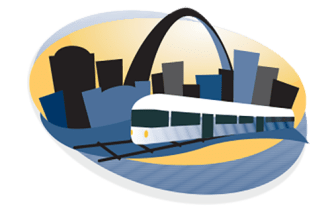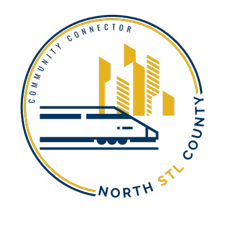[vc_row css=”.vc_custom_1494709946857{margin-top: 0px !important;margin-right: 20px !important;margin-bottom: 0px !important;margin-left: 20px !important;border-top-width: 0px !important;border-bottom-width: 0px !important;padding-top: 0px !important;padding-bottom: 0px !important;}”][vc_column 0=””][vc_custom_heading text=”FREQUENTLY ASKED QUESTIONS” font_container=”tag:h2|font_size:40px|text_align:left|color:%23335f8b|line_height:45px” google_fonts=”font_family:Oswald%3A300%2Cregular%2C700|font_style:700%20bold%20regular%3A700%3Anormal” css=”.vc_custom_1494855121333{margin-top: 0px !important;margin-bottom: 15px !important;border-top-width: 0px !important;border-bottom-width: 0px !important;padding-bottom: 0px !important;}”][vc_custom_heading text=”It is important for everyone in St. Louis to understand what the Northside-Southside light rail line is and where it goes, what the current study hopes to accomplish, and what will happen in the future. We do not know all the answers right now, but we hope these questions are a good start. Contact us with additional questions.” font_container=”tag:p|font_size:20px|text_align:left|color:%23335f8b|line_height:30px” google_fonts=”font_family:Roboto%3A100%2C100italic%2C300%2C300italic%2Cregular%2Citalic%2C500%2C500italic%2C700%2C700italic%2C900%2C900italic|font_style:400%20regular%3A400%3Anormal”][/vc_column][/vc_row][vc_row full_width=”stretch_row” css=”.vc_custom_1494647372013{margin-bottom: 0px !important;border-bottom-width: 0px !important;background-color: #003768 !important;}”][vc_column 0=””][vc_custom_heading text=”What is the Northside-Southside line? Where would it go?” font_container=”tag:p|font_size:35px|text_align:center|color:%23ffffff|line_height:40px” google_fonts=”font_family:Oswald%3A300%2Cregular%2C700|font_style:700%20bold%20regular%3A700%3Anormal”][/vc_column][/vc_row][vc_row 0=””][vc_column 0=””][vc_custom_heading text=”The Northside-Southside light rail line is a proposed expansion of MetroLink light rail in the City of St. Louis that would run from South St. Louis County at I-55 and Bayless Road, north through Downtown, and northwest to I-70 and Goodfellow Boulevard. Alternative routes near the planned NGA facility in North St. Louis will be considered. The proposed Northside-Southside line would serve 14th Street near the Civic Center Station and would offer a pedestrian connection to the existing Red and Blue MetroLink lines, which run east-west from Scott Air Force Base in Illinois to Lambert St. Louis International Airport and the Shrewsbury-Lansdowne I-44 Station.” font_container=”tag:p|font_size:20px|text_align:left|color:%23335f8b|line_height:30px” google_fonts=”font_family:Roboto%3A100%2C100italic%2C300%2C300italic%2Cregular%2Citalic%2C500%2C500italic%2C700%2C700italic%2C900%2C900italic|font_style:400%20regular%3A400%3Anormal”][vc_single_image image=”29066″ img_size=”large” alignment=”center” style=”vc_box_rounded” onclick=”img_link_large”][vc_custom_heading text=”The proposed Northside-Southside line was identified as a potential option for light rail expansion in the 1990s, studied in 2008 and included in the 2009 Metro Long-Range Plan.” font_container=”tag:p|font_size:20px|text_align:left|color:%23335f8b|line_height:30px” google_fonts=”font_family:Roboto%3A100%2C100italic%2C300%2C300italic%2Cregular%2Citalic%2C500%2C500italic%2C700%2C700italic%2C900%2C900italic|font_style:400%20regular%3A400%3Anormal”][/vc_column][/vc_row][vc_row full_width=”stretch_row” css=”.vc_custom_1494647372013{margin-bottom: 0px !important;border-bottom-width: 0px !important;background-color: #003768 !important;}”][vc_column 0=””][vc_custom_heading text=”What is the study’s primary goal?” font_container=”tag:p|font_size:35px|text_align:center|color:%23ffffff|line_height:40px” google_fonts=”font_family:Oswald%3A300%2Cregular%2C700|font_style:700%20bold%20regular%3A700%3Anormal”][/vc_column][/vc_row][vc_row 0=””][vc_column 0=””][vc_custom_heading text=”The primary goal of the study is to provide the public and regional and local decision-makers with the information needed to decide whether to move the project forward. In addition, the study will provide information needed to determine how to do that and financial options to fund it.” font_container=”tag:p|font_size:20px|text_align:left|color:%23335f8b|line_height:30px” google_fonts=”font_family:Roboto%3A100%2C100italic%2C300%2C300italic%2Cregular%2Citalic%2C500%2C500italic%2C700%2C700italic%2C900%2C900italic|font_style:400%20regular%3A400%3Anormal”][vc_custom_heading text=”The study will focus on costs, both capital and operating, and on a range of benefits, including transportation (primarily transit ridership) and neighborhood development impacts. It will depend heavily on the analysis completed for the 2008 Northside-Southside study – verifying and confirming conclusions from that work and completing more detailed new analysis where new conditions warrant it.” font_container=”tag:p|font_size:20px|text_align:left|color:%23335f8b|line_height:30px” google_fonts=”font_family:Roboto%3A100%2C100italic%2C300%2C300italic%2Cregular%2Citalic%2C500%2C500italic%2C700%2C700italic%2C900%2C900italic|font_style:400%20regular%3A400%3Anormal”][/vc_column][/vc_row][vc_row full_width=”stretch_row” css=”.vc_custom_1494647372013{margin-bottom: 0px !important;border-bottom-width: 0px !important;background-color: #003768 !important;}”][vc_column 0=””][vc_custom_heading text=”When could we build Northside-Southside?” font_container=”tag:p|font_size:35px|text_align:center|color:%23ffffff|line_height:40px” google_fonts=”font_family:Oswald%3A300%2Cregular%2C700|font_style:700%20bold%20regular%3A700%3Anormal”][/vc_column][/vc_row][vc_row 0=””][vc_column 0=””][vc_custom_heading text=”The project schedule is not set – a lot of things have to be in order to make this line a reality. However, assuming timely regional decision-making and available funding, construction could start as early as 2023 and revenue operations could begin in 2027.” font_container=”tag:p|font_size:20px|text_align:left|color:%23335f8b|line_height:30px” google_fonts=”font_family:Roboto%3A100%2C100italic%2C300%2C300italic%2Cregular%2Citalic%2C500%2C500italic%2C700%2C700italic%2C900%2C900italic|font_style:400%20regular%3A400%3Anormal”][vc_single_image image=”28932″ img_size=”large” alignment=”center”][/vc_column][/vc_row][vc_row full_width=”stretch_row” css=”.vc_custom_1494647372013{margin-bottom: 0px !important;border-bottom-width: 0px !important;background-color: #003768 !important;}”][vc_column 0=””][vc_custom_heading text=”Do we need federal funding to build it?” font_container=”tag:p|font_size:35px|text_align:center|color:%23ffffff|line_height:40px” google_fonts=”font_family:Oswald%3A300%2Cregular%2C700|font_style:700%20bold%20regular%3A700%3Anormal”][/vc_column][/vc_row][vc_row 0=””][vc_column 0=””][vc_custom_heading text=”Yes, it is assumed that the Northside-Southside project would need and receive up to 50 percent of its capital cost from the Federal Transit Administration (FTA). This is a common assumption during planning stages of major rail transit projects in the United States.” font_container=”tag:p|font_size:20px|text_align:left|color:%23335f8b|line_height:30px” google_fonts=”font_family:Roboto%3A100%2C100italic%2C300%2C300italic%2Cregular%2Citalic%2C500%2C500italic%2C700%2C700italic%2C900%2C900italic|font_style:400%20regular%3A400%3Anormal”][vc_custom_heading text=”Gaining such support depends upon a project’s performance against FTA evaluation criteria, including such factors as ridership, cost (both capital and operations), development impacts, and a realistic plan for the non-federal share of capital costs. There are several areas, in addition to financing, where St. Louis itself could take action to improve the likelihood of receiving federal support. These include transit-supportive land-use plans and zoning policies, specific tools to implement those plans and policies, and affordable housing plans.” font_container=”tag:p|font_size:20px|text_align:left|color:%23335f8b|line_height:30px” google_fonts=”font_family:Roboto%3A100%2C100italic%2C300%2C300italic%2Cregular%2Citalic%2C500%2C500italic%2C700%2C700italic%2C900%2C900italic|font_style:400%20regular%3A400%3Anormal”][vc_custom_heading text=”The financial plan for the project will include the identification of realistic sources for the non-federal share of capital costs, as well as for operating costs. These could be local, regional or state funding sources. The proceeds from an increased city sales tax would be an important component of the financial plan, but may not be sufficient to fund the entire non-federal share.” font_container=”tag:p|font_size:20px|text_align:left|color:%23335f8b|line_height:30px” google_fonts=”font_family:Roboto%3A100%2C100italic%2C300%2C300italic%2Cregular%2Citalic%2C500%2C500italic%2C700%2C700italic%2C900%2C900italic|font_style:400%20regular%3A400%3Anormal”][vc_custom_heading text=”Historically the state of Missouri has not provided funding for transit capital investments. East-West Gateway Council of Governments (EWGCOG) is assuming no change in this policy; as a result, it is assumed that no funds will be available from the state. EWGCOG is open to the possibility of private sector resources to assist with the project, although it is not anticipated that these would eliminate the need for local, regional, and/or state funds.” font_container=”tag:p|font_size:20px|text_align:left|color:%23335f8b|line_height:30px” google_fonts=”font_family:Roboto%3A100%2C100italic%2C300%2C300italic%2Cregular%2Citalic%2C500%2C500italic%2C700%2C700italic%2C900%2C900italic|font_style:400%20regular%3A400%3Anormal”][/vc_column][/vc_row][vc_row 0=””][vc_column width=”1/2″][vc_single_image image=”28946″ img_size=”medium” add_caption=”yes” alignment=”center”][/vc_column][vc_column width=”1/2″][vc_single_image image=”28947″ img_size=”medium” add_caption=”yes” alignment=”center”][/vc_column][/vc_row][vc_row full_width=”stretch_row” css=”.vc_custom_1494647372013{margin-bottom: 0px !important;border-bottom-width: 0px !important;background-color: #003768 !important;}”][vc_column 0=””][vc_custom_heading text=”Could we build Northside-Southside in phases?” font_container=”tag:p|font_size:35px|text_align:center|color:%23ffffff|line_height:40px” google_fonts=”font_family:Oswald%3A300%2Cregular%2C700|font_style:700%20bold%20regular%3A700%3Anormal”][/vc_column][/vc_row][vc_row 0=””][vc_column 0=””][vc_custom_heading text=”Yes. While this study will analyze the entire corridor from Goodfellow Boulevard on the north to Bayless Road in South St. Louis County, it will also consider one or more shorter segments, possibly as Phase 1 of a longer line. However, to receive federal funding, a starter line would still have to meet FTA project justification criteria. And while shorter lines would reduce costs, they also would result in fewer riders and related benefits.” font_container=”tag:p|font_size:20px|text_align:left|color:%23335f8b|line_height:30px” google_fonts=”font_family:Roboto%3A100%2C100italic%2C300%2C300italic%2Cregular%2Citalic%2C500%2C500italic%2C700%2C700italic%2C900%2C900italic|font_style:400%20regular%3A400%3Anormal”][/vc_column][/vc_row][vc_row full_width=”stretch_row” css=”.vc_custom_1494647372013{margin-bottom: 0px !important;border-bottom-width: 0px !important;background-color: #003768 !important;}”][vc_column 0=””][vc_custom_heading text=”Will the study team consider serving the new NGA West campus?” font_container=”tag:p|font_size:35px|text_align:center|color:%23ffffff|line_height:40px” google_fonts=”font_family:Oswald%3A300%2Cregular%2C700|font_style:700%20bold%20regular%3A700%3Anormal”][/vc_column][/vc_row][vc_row 0=””][vc_column 0=””][vc_custom_heading text=”As a result of the decision to build the NGA facility east of Jefferson Avenue and Parnell Street and north of Cass Avenue, one or more alternatives that would be closer to NGA will be analyzed in detail before a recommendation is made on whether to select the original preferred alignment or an NGA-focused option.” font_container=”tag:p|font_size:20px|text_align:left|color:%23335f8b|line_height:30px” google_fonts=”font_family:Roboto%3A100%2C100italic%2C300%2C300italic%2Cregular%2Citalic%2C500%2C500italic%2C700%2C700italic%2C900%2C900italic|font_style:400%20regular%3A400%3Anormal”][vc_custom_heading text=”That recommendation will be based on costs, ridership and development impacts. Going into the study there is no assumption as to which alternative is likely to be recommended.” font_container=”tag:p|font_size:20px|text_align:left|color:%23335f8b|line_height:30px” google_fonts=”font_family:Roboto%3A100%2C100italic%2C300%2C300italic%2Cregular%2Citalic%2C500%2C500italic%2C700%2C700italic%2C900%2C900italic|font_style:400%20regular%3A400%3Anormal”][vc_single_image image=”28974″ img_size=”large” add_caption=”yes” alignment=”center” onclick=”img_link_large”][/vc_column][/vc_row][vc_row full_width=”stretch_row” css=”.vc_custom_1494647372013{margin-bottom: 0px !important;border-bottom-width: 0px !important;background-color: #003768 !important;}”][vc_column 0=””][vc_custom_heading text=”Will Northside-Southside be different from MetroLink? ” font_container=”tag:p|font_size:35px|text_align:center|color:%23ffffff|line_height:40px” google_fonts=”font_family:Oswald%3A300%2Cregular%2C700|font_style:700%20bold%20regular%3A700%3Anormal”][/vc_column][/vc_row][vc_row 0=””][vc_column 0=””][vc_custom_heading text=”Both would use standard light-rail vehicles (LRVs) – the Northside-Southside line would not use streetcars, such as those that will run on the new Loop Trolley line. The electrical power systems (overhead wires) would be the same for existing MetroLink and the Northside-Southside light rail.” font_container=”tag:p|font_size:20px|text_align:left|color:%23335f8b|line_height:30px” google_fonts=”font_family:Roboto%3A100%2C100italic%2C300%2C300italic%2Cregular%2Citalic%2C500%2C500italic%2C700%2C700italic%2C900%2C900italic|font_style:400%20regular%3A400%3Anormal”][vc_custom_heading text=”The main difference between existing and proposed light rail lines would be floor heights: existing MetroLink vehicles have high floors to serve the system’s high-level platforms, whereas Northside-Southside would have low floors and low platforms more suitable for street-running operation in urban neighborhoods (see below in Norfolk, VA).” font_container=”tag:p|font_size:20px|text_align:left|color:%23335f8b|line_height:30px” google_fonts=”font_family:Roboto%3A100%2C100italic%2C300%2C300italic%2Cregular%2Citalic%2C500%2C500italic%2C700%2C700italic%2C900%2C900italic|font_style:400%20regular%3A400%3Anormal”][vc_media_grid element_width=”6″ initial_loading_animation=”none” grid_id=”vc_gid:1505745541615-e63222c9-375e-3″ include=”28558,28940″][vc_custom_heading text=”The existing MetroLink lines have separated rights-of-way, similar to standard freight railroad operations in the United States. While there are grade crossings, which are all protected by gates and flashing warning lights, the existing MetroLink lines never run in the street. This provides for greater operating speeds than is typical for light-rail systems across the country.” font_container=”tag:p|font_size:20px|text_align:left|color:%23335f8b|line_height:30px” google_fonts=”font_family:Roboto%3A100%2C100italic%2C300%2C300italic%2Cregular%2Citalic%2C500%2C500italic%2C700%2C700italic%2C900%2C900italic|font_style:400%20regular%3A400%3Anormal”][vc_custom_heading text=”Unlike St. Louis’s existing MetroLink, many light rail systems across the country run in the street, which is how the Northside-Southside route would operate. Street-running light rail tracks (LRT) are at-grade, meaning the rails are at roadway height. This results in slower operating speeds and many at-grade crossings of cross streets – usually controlled by modified traffic lights that give priority to LRVs, rather than gates and flashing warnings.” font_container=”tag:p|font_size:20px|text_align:left|color:%23335f8b|line_height:30px” google_fonts=”font_family:Roboto%3A100%2C100italic%2C300%2C300italic%2Cregular%2Citalic%2C500%2C500italic%2C700%2C700italic%2C900%2C900italic|font_style:400%20regular%3A400%3Anormal”][vc_custom_heading text=”The major benefit of street-running LRT is a positive effect on neighborhood development, as demonstrated by other modern light rail systems across the country, including Portland, Dallas, Minneapolis, and Charlotte. In those communities, transit is in the center of residential and commercial activity, improving pedestrian and bicycle access, and making station areas more attractive to developers.” font_container=”tag:p|font_size:20px|text_align:left|color:%23335f8b|line_height:30px” google_fonts=”font_family:Roboto%3A100%2C100italic%2C300%2C300italic%2Cregular%2Citalic%2C500%2C500italic%2C700%2C700italic%2C900%2C900italic|font_style:400%20regular%3A400%3Anormal”][/vc_column][/vc_row]

